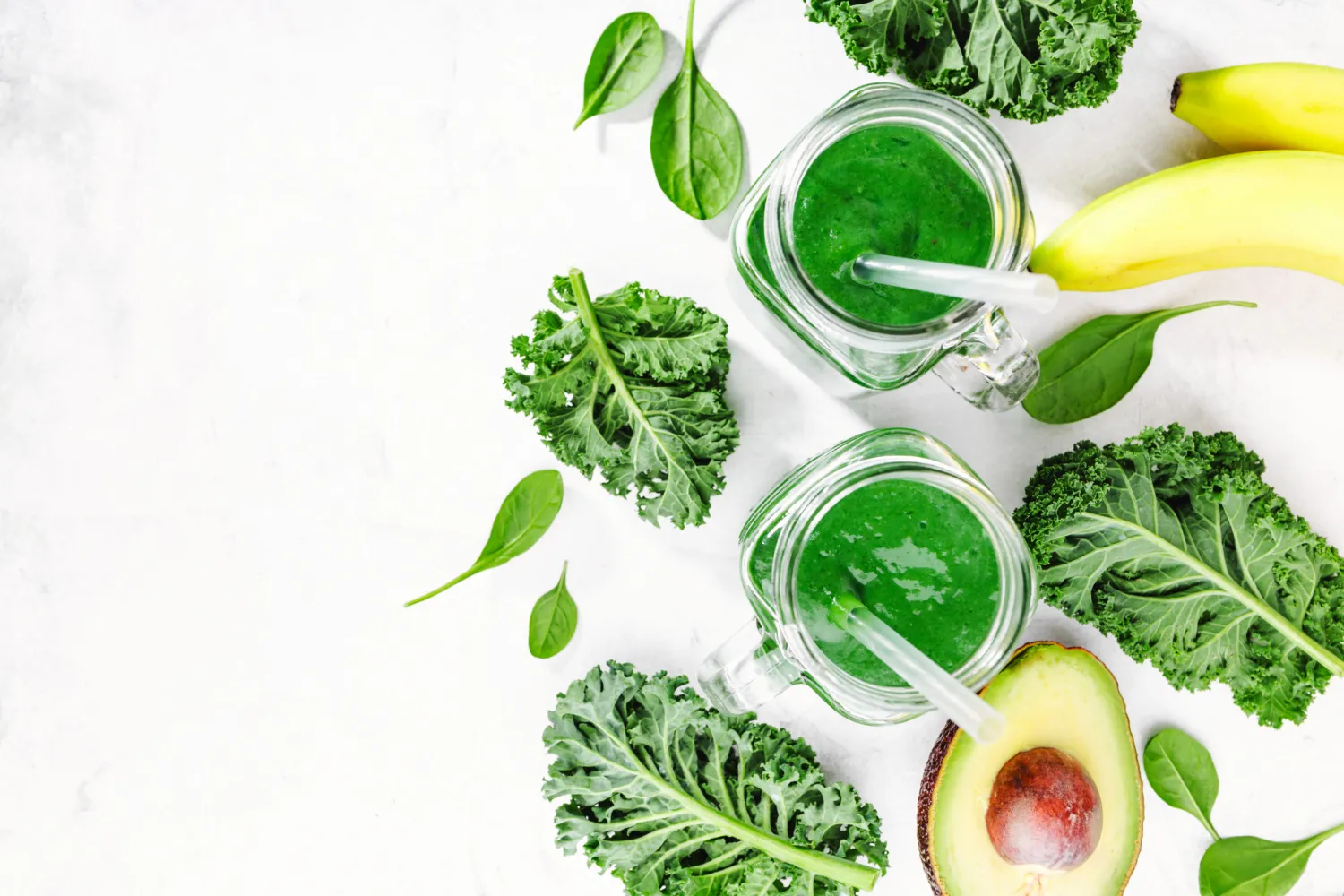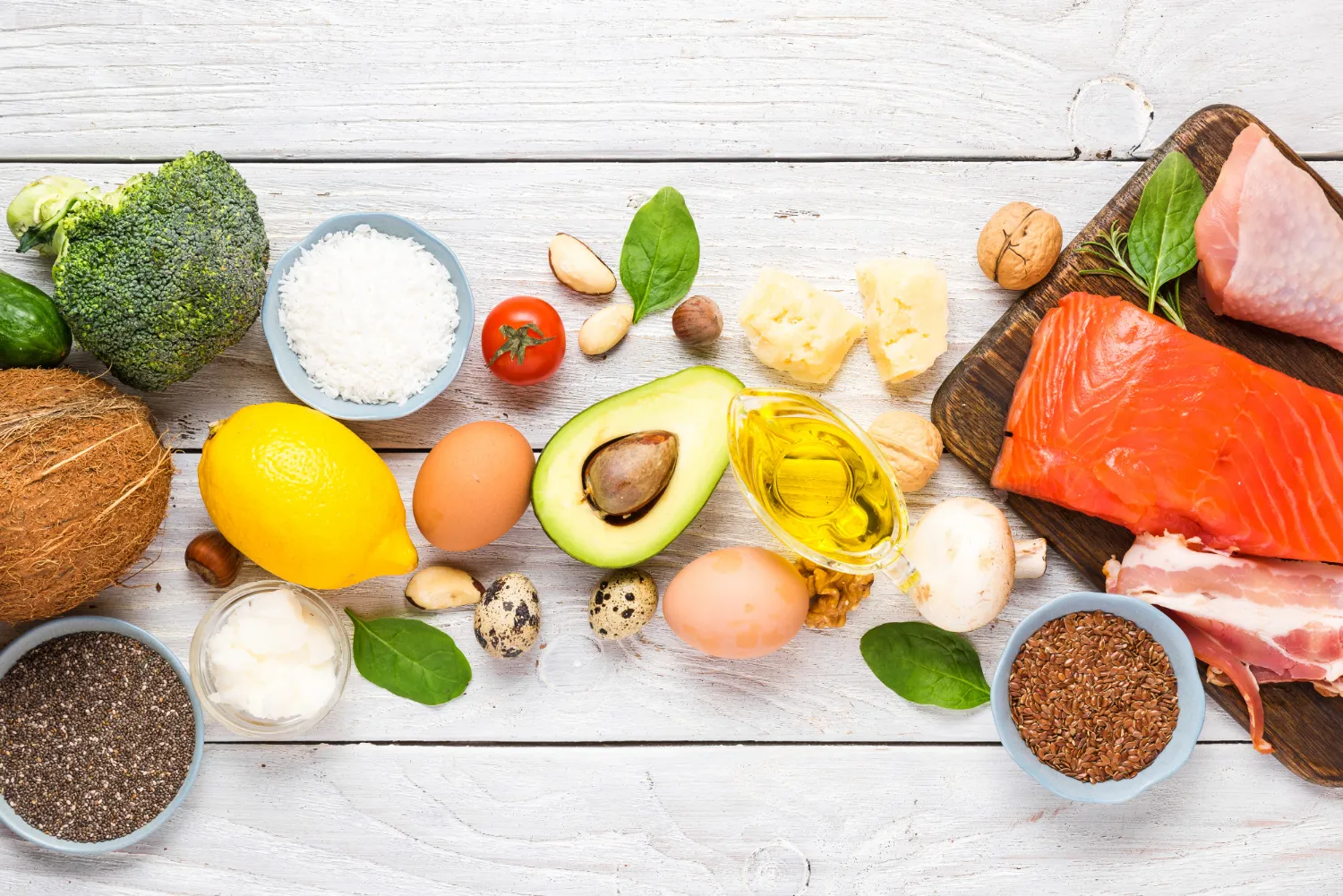First conceptualized in the 1960s, carb cycling is one of the lesser-known nutrition strategies that involve alternating carbohydrate intake based on three things: activity levels, goals, and hormonal needs.
Initially invented by Swedish physiologist Gunvar Ahlborg after studying runners, it has since gained popularity, especially among menopausal women who experience hormonal fluctuations, insulin sensitivity, and muscle loss. The goal is to align carb intake with your body’s recovery needs and workout intensity, resulting in stable blood sugar levels, better hormonal balance, and improved metabolism.
In this guide, we’ll break down macro ratios, meal timing, and common pitfalls to help you adapt carb cycling, regardless of whether your goal is fat loss, muscle growth, or better metabolic health.
How to Determine Carb Cycling Macros for Females

Before you start calculating your macros for carb cycling, you have to consider how much energy you need. Your total calorie intake depends on factors like your age, weight, and activity levels.
For example, at 35 years old and with moderate activity, you might only need 2,000 calories a day, but you’ll need less during your postmenopausal years if you live a sedentary lifestyle.
From there, you can adjust your carbohydrates while retaining your protein intake to preserve your muscle mass.
Setting Up High-Carb, Moderate-Carb, and Low-Carb Days
High-carb days (5-7g per kg of body weight) pair with intense training to refuel glycogen. Think sprints, heavy lifting, or endurance workouts. Moderate days (3-4g/kg) suit light activities like yoga, while low-carb days (1-2g/kg) are best suited during your rest days or low-intensity exercises like a brisk walk around the block.
If you weigh 68 kilograms, this translates to 340 to 476 grams of carbohydrates on high days, 204 to 272 grams on moderate days, and 68 to 136 grams on low days.
To avoid blood sugar spikes, you’ll want to focus on adding fiber-rich carbohydrate sources to your meals, like wild rice or buckwheat.
Adjusting Protein and Fat Intake for Balance
Don’t mess with your protein intake. If anything, you should eat more. Studies have proven that women need more protein intake as they age. So try to keep your protein at 1.6 to 2.2 grams per kilogram.
Using the same weight example, this translates to 109 to 150 grams of daily protein sourced from pasture-raised eggs, lean meat, and plant-based protein sources like lentils.
As for the rest of your daily calorie intake, this is where healthy fats come in. Omega-3 fatty acids and other fat sources like avocado, chia seeds, and sardines provide sustained energy without spiking your insulin levels.
How to Track Macros and Meal Timing for Best Results
You can use apps to simplify macro tracking, which, according to studies, has been proven to be effective in helping with weight loss and management. But if you prefer to write things down, that’s okay. Either way, do what works for you.
What Is Carb Cycling?

In a nutshell, carb cycling is adjusting your carbohydrate intake based on your daily energy demands.
Unlike rigid diets, it’s adaptive. If you’re busy, this means that you can eat less. But, at the same time, if you plan on doing something more physically intensive for the next few days, you’ll have to eat more. This adaptability makes it more sustainable for busy lifestyles. The best part is that it also leverages insulin sensitivity, which is higher on active days, shuttling carbohydrates into muscles instead of fat stores.
How Carb Cycling Works for Fat Loss and Muscle Gain
Eating more carbohydrates replenishes glycogen storage, giving you enough fuel to work without losing muscle. Meanwhile, on low-carbohydrate days, the diet encourages fat adaptation, which is to say that it will start using your stored fat for energy. It’s a dual combination that ultimately leads to better and more consistent fat-burning as muscles burn calories even when at rest.
Meal Prep Tips for a Successful Carb Cycling Plan
This is where things get tricky. Meal prepping for carb cycling requires careful planning so you can match your carbohydrate intake with activity levels.
You can start by designating days for high, moderate, and low-carb phases. To save time, batch-cook proteins like grass-fed beef, tempeh, or tofu, which go well with different carbohydrate sources. Afterward, you can roast and store a mix of starchy and non-starchy vegetables. Finally, don’t forget to prepare easy and convenient snacks, like roasted chickpeas and hard-boiled eggs.
Having a combination of ready-to-go meals means avoiding the more convenient, usually processed options.
We recommend investing in see-through glass, compartmentalized containers for meal portioning.
How to Plan and Prep Meals for High- and Low-Carb Days
Just because you’re recommended to eat more carbohydrates doesn’t mean you should eat every carb you can find. Instead, focus on complex carbohydrates that sustain energy, like black rice or kabocha squash, pairing them with lean protein sources. Your post-workout meal could look like baked trout with mashed taro root and steamed broccoli.
For low-carb days, shift to fibrous vegetables such as okra or artichokes and increase fat intake like ghee or macadamia nuts.
Prepare your breakfasts differently. On high-carb mornings, blend oats with protein powders, but on your rest or low-carb days, opt for something lighter, like chia pudding with coconut milk.
Best Protein and Fat Sources for Each Phase
Prioritize proteins with high bioavailability, such as wild-caught shrimp or cottage cheese, to meet daily targets without excess calories. Plant-based options like mung beans or spirulina-infused smoothies work for vegetarian diets. In fact, one study shows that women eating plant-based protein live healthier lives.
For your rest days, adjust your protein and fat intake accordingly. Go for quality over quantity, avoiding anything calorie-dense like nuts.
Timing Your Meals Around Workouts
For best results, eat before and after working out. But make sure to keep your meals slow and fast-digesting. For example, a banana with almond butter contains just the right amount of calories to energize your workouts. Afterward, go for something heavier, preferably something filled with carbohydrates and protein, like quinoa with grilled turkey breast and kimchi.
On your rest days, delay your carbohydrate-heavy meals until much later to extend fat-burning periods.
Common Mistakes to Avoid with Carb Cycling

Low-carb days don’t mean near-zero-carb days. The former gives your body just enough carbohydrates to sustain itself without leaving you feeling tired and famished. The latter is dangerous and can trigger fatigue and unhealthy cravings. Another is neglecting electrolyte balance or forgetting that your body needs just as much protein as it does carbohydrates, if not more.
Not Eating Enough Protein or Healthy Fats
Skimping on protein accelerates muscle loss, particularly during perimenopause, when estrogen declines. Similarly, avoiding fats disrupts hormone synthesis. Your body needs enough of both to support itself. Otherwise, you’ll experience health problems like dry skin, hormonal imbalance, and weight gain.
To prevent this, add healthy protein and healthy fat sources to your diet, like avocado oil or pasture-raised butter.
Over-Restricting Carbs and Slowing Metabolism
Severely depriving yourself of carbohydrates may lower your leptin levels, a hormone responsible for regulating hunger and metabolism. This can hurt your physical fitness journey, stalling fat loss and making you more irritable. You can avoid this by getting your fill of carbohydrates, preferably from carbohydrate-dense food sources like roasted beets, oats, and quinoa.
Ignoring Energy Levels and Hormonal Fluctuations
Your female physiology means that you have to make certain adjustments based on the time of the month. For example, during your luteal phase or when you’re going through menopause, your body needs more carbohydrates to fight against progesterone-driven insulin resistance.
To eliminate guesswork, learn to track your energy and mood levels. Brain fog might be part of menopause, but studies show that it’s also a sign that you’re getting your carbohydrates from the wrong sources. Complex carbohydrates, not simple sugars, should be where you get your carbohydrate intake.
7-Day Carb Cycling Meal Plan Sample

High-Carb (Days 1, 3, 5)
- Breakfast: Scrambled eggs with mashed kabocha squash (slow-digesting carbs for sustained energy) and a side of sauerkraut for gut health.
- Post-Workout Meal: Grilled venison paired with black rice (fiber-rich carb) and roasted Brussels sprouts to replenish glycogen stores.
- Dinner: Baked cod with mashed parsnips (vitamin C-rich starch) and sautéed kale for muscle repair.
- Snack: Apple slices with cashew butter to curb cravings without spiking blood sugar.
Goal: Prioritize complex carbs around workouts to fuel performance and recovery.
Moderate-Carb Days (Days 2, 6)
- Breakfast: Spinach omelet with a small roasted sweet potato (balanced carbs and protein for steady energy).
- Lunch: Salmon sashimi over kelp noodles (low-carb base) with avocado and sesame seeds for omega-3s.
- Dinner: Herb-roasted chicken thighs with roasted radishes (fiber-packed veggie) and a side of black beans.
- Snack: Raspberries with almonds (antioxidants + healthy fats) for a metabolic-friendly option.
Goal: Combine carbs with protein and fats to maintain energy for moderate activity like yoga or hiking.
Low-Carb Days (Days 4,7)
- Breakfast: Chia pudding made with coconut milk and flaxseeds (high-fiber, plant-based fats for satiety).
- Lunch: Kale salad with grilled chicken livers (iron-rich protein), pumpkin seeds, and olive oil dressing.
- Dinner: Braised lamb shanks with cauliflower puree (creamy low-carb sub) and garlicky broccolini.
- Snack: Sardines on flaxseed crackers (omega-3 boost) to support hormone balance.
Goal: Emphasize fats and fiber to promote fat adaptation and manage insulin sensitivity on rest days.
Final Thoughts on Carb Cycling Macros for Females
When done right, carb cycling empowers you to take control of your body’s natural hormonal shifts and teaches it to switch between fuel sources without extreme restrictions. Low-carb days can help you manage insulin resistance, while high-carb days give you fuel to power through intense workout sessions. You can also fine-tune how much you’re eating by tracking your energy, hunger cues, and performance for better results.
However, you shouldn’t forget to consult a nutritionist, especially when managing health conditions like PCOS or thyroid imbalances.
Sources
- Ardisson Korat, Andres V., et al. "Dietary Protein Intake in Midlife in Relation to Healthy Aging – Results from the Prospective Nurses’ Health Study Cohort." The American Journal of Clinical Nutrition, vol. 119, no. 2, 2024, pp. 271-282, https://doi.org/10.1016/j.ajcnut.2023.11.010. Accessed 2 Mar. 2025.
- Tong, Huong L., et al. "The Use of Mobile Apps and Fitness Trackers to Promote Healthy Behaviors during COVID-19: A Cross-sectional Survey." PLOS Digital Health, vol. 1, no. 8, 2022, https://doaj.org/article/09a95483981b4073b495f2a249bb27da. Accessed 2 Mar. 2025.
- Langyan, Sapna, et al. "Sustaining Protein Nutrition Through Plant-Based Foods." Frontiers in Nutrition, vol. 8, 2022, p. 772573, https://doi.org/10.3389/fnut.2021.772573. Accessed 2 Mar. 2025.
- Muth, Anne, and Soyoung Q. Park. "The Impact of Dietary Macronutrient Intake on Cognitive Function and the Brain." Clinical Nutrition, vol. 40, no. 6, 2021, pp. 3999-4010, https://doi.org/10.1016/j.clnu.2021.04.043. Accessed 2 Mar. 2025.
FAQs
What is carb cycling?
Carb cycling is a dietary approach where you alternate between high and low carbohydrate days to maximize metabolism and fat loss while maintaining muscle mass.
How does carb cycling benefit women specifically?
For women, carb cycling can help manage hormone levels, improve energy during workouts, and potentially break through weight loss plateaus by optimizing metabolic rates.
What are typical macro ratios for carb cycling?
Macro ratios can vary, but a common approach is to have high-carb days with a macro split of 50% carbs, 25% protein, and 25% fats, and low-carb days with 25% carbs, 45% protein, and 30% fats.
Can carb cycling fit into an active lifestyle?
Yes, carb cycling can be particularly beneficial for active women as it aligns carbohydrate intake with workout days for energy optimization and muscle recovery.
How long should I follow a carb cycling plan?
The duration can vary based on individual goals and responses to the diet. It's typically followed for 8-12 weeks, but adjustments may be necessary based on progress and health feedback.














